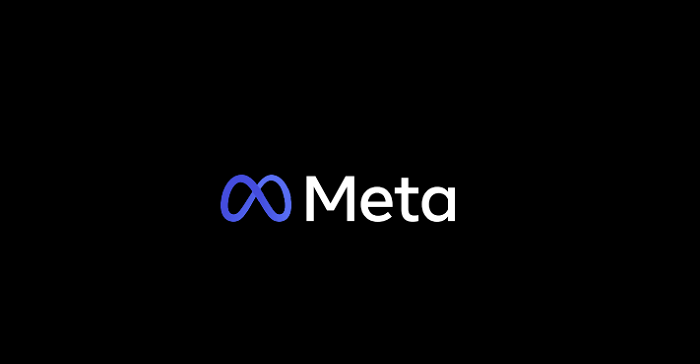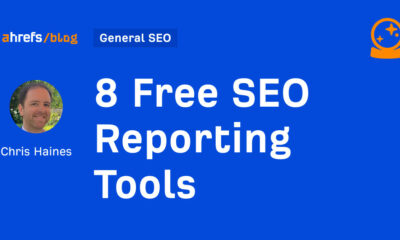SOCIAL
Meta Outlines Evolving Efforts to Combat Mass Reporting and ‘Brigading’ in Latest Threat Report

Meta has published its latest Adversarial Threat Report, which looks at all the malicious and scam networks that it detected and took action against in Q2 2022.
And much of it is as we’ve come to expect – Meta removed two clusters of hacker groups operating in South East Asia, as well as a troll farm originating from Russia, which targeted global public discourse about the war in Ukraine, in an effort to seed pro-Russia sentiment.
Those are pretty much in line with Meta’s usual threat reports, but the company also took action on two new fronts, which could, eventually, have broader-reaching impacts.
In the first case, Meta took action against a group of accounts in India for ‘brigading’, or engaging in mass, coordinated action against certain users, in order to effectively silence them online.
As explained by Meta:
“We took down a brigading network of about 300 accounts on Facebook and Instagram in India that worked together to mass-harass people, including activists, comedians, actors and other influencers. The individuals behind this activity relied on a combination of authentic and duplicate accounts, and would call on others to harass people who posted content that this group deemed offensive to Hindus. The members of this network would then post high volumes of negative comments under the targets’ posts. In response, some people would hide or delete their posts leading to celebratory comments claiming a “successful raid.”
That’s interesting, because depending on your definition, this likely happens a lot, with groups of people coming together to flood comment streams and attack both the original poster and/or other users, in order to push forward their agenda, and essentially intimidate those with dissenting views.
That could also then extend to political tactics to ‘flood the zone’ with misinformation and rumor, in order to disorient audiences and sow distrust of the media in general. Such tactics are reliant on a form of brigading, which could also fall under this same enforcement approach, if it were to be extended.
It’ll be interesting to see whether brigading becomes a bigger focus for Meta’s team moving forward, and how, exactly, it defines brigading attacks, with the specific traits and trends playing a key role in dictating how such can be used to restrict information online.
On another front, Meta also took action against a group of accounts for mass reporting, which looks to use Meta’s own moderation tools for content suppression.
“In Q2 of 2022, we removed a network of about 2,800 accounts, Groups and Pages in Indonesia that worked together to falsely report people for various violations, including hate speech, impersonation, terrorism and bullying, in an attempt to have them and their posts wrongfully removed from Facebook. Most of these reports focused on people in Indonesia, primarily within the Wahhabi Muslim community. To conceal their activity and avoid detection, the individuals in this network would replace letters with numbers when posting about their targets. They, at times, created fake accounts that impersonated real people and then used them to report authentic users for impersonation.”
That’s another rising form of abuse, and it’s interesting to see how Meta is evolving its tactics to deal with these new threats, and approaching each in a more proactive way, as opposed to letting them become bigger concerns before quashing such practices.
The new enforcement elements provide some interesting perspective on the ever-changing threat landscape around online misinformation and political tactics, and as noted, if Meta were to expand such, that could have a big impact on how users coordinate and focus their efforts in this way.
Could sharing a divisive post into a group, where you know that the members will disagree, also count as brigading, if those members then go on to leave comments on the post attacking the person and their claims?
That seems like the exact same process, though maybe not as intentional, and that’s the type of next-level enforcement that we may be looking at next as Meta continues to improve its approaches.
You can read Meta’s full Q2 2022 Adversarial Threat Report here.
SOCIAL
Snapchat Explores New Messaging Retention Feature: A Game-Changer or Risky Move?

In a recent announcement, Snapchat revealed a groundbreaking update that challenges its traditional design ethos. The platform is experimenting with an option that allows users to defy the 24-hour auto-delete rule, a feature synonymous with Snapchat’s ephemeral messaging model.
The proposed change aims to introduce a “Never delete” option in messaging retention settings, aligning Snapchat more closely with conventional messaging apps. While this move may blur Snapchat’s distinctive selling point, Snap appears convinced of its necessity.
According to Snap, the decision stems from user feedback and a commitment to innovation based on user needs. The company aims to provide greater flexibility and control over conversations, catering to the preferences of its community.
Currently undergoing trials in select markets, the new feature empowers users to adjust retention settings on a conversation-by-conversation basis. Flexibility remains paramount, with participants able to modify settings within chats and receive in-chat notifications to ensure transparency.
Snapchat underscores that the default auto-delete feature will persist, reinforcing its design philosophy centered on ephemerality. However, with the app gaining traction as a primary messaging platform, the option offers users a means to preserve longer chat histories.
The update marks a pivotal moment for Snapchat, renowned for its disappearing message premise, especially popular among younger demographics. Retaining this focus has been pivotal to Snapchat’s identity, but the shift suggests a broader strategy aimed at diversifying its user base.
This strategy may appeal particularly to older demographics, potentially extending Snapchat’s relevance as users age. By emulating features of conventional messaging platforms, Snapchat seeks to enhance its appeal and broaden its reach.
Yet, the introduction of message retention poses questions about Snapchat’s uniqueness. While addressing user demands, the risk of diluting Snapchat’s distinctiveness looms large.
As Snapchat ventures into uncharted territory, the outcome of this experiment remains uncertain. Will message retention propel Snapchat to new heights, or will it compromise the platform’s uniqueness?
Only time will tell.
SOCIAL
Catering to specific audience boosts your business, says accountant turned coach

While it is tempting to try to appeal to a broad audience, the founder of alcohol-free coaching service Just the Tonic, Sandra Parker, believes the best thing you can do for your business is focus on your niche. Here’s how she did just that.
When running a business, reaching out to as many clients as possible can be tempting. But it also risks making your marketing “too generic,” warns Sandra Parker, the founder of Just The Tonic Coaching.
“From the very start of my business, I knew exactly who I could help and who I couldn’t,” Parker told My Biggest Lessons.
Parker struggled with alcohol dependence as a young professional. Today, her business targets high-achieving individuals who face challenges similar to those she had early in her career.
“I understand their frustrations, I understand their fears, and I understand their coping mechanisms and the stories they’re telling themselves,” Parker said. “Because of that, I’m able to market very effectively, to speak in a language that they understand, and am able to reach them.”Â
“I believe that it’s really important that you know exactly who your customer or your client is, and you target them, and you resist the temptation to make your marketing too generic to try and reach everyone,” she explained.
“If you speak specifically to your target clients, you will reach them, and I believe that’s the way that you’re going to be more successful.
Watch the video for more of Sandra Parker’s biggest lessons.
SOCIAL
Instagram Tests Live-Stream Games to Enhance Engagement

Instagram’s testing out some new options to help spice up your live-streams in the app, with some live broadcasters now able to select a game that they can play with viewers in-stream.
As you can see in these example screens, posted by Ahmed Ghanem, some creators now have the option to play either “This or That”, a question and answer prompt that you can share with your viewers, or “Trivia”, to generate more engagement within your IG live-streams.
That could be a simple way to spark more conversation and interaction, which could then lead into further engagement opportunities from your live audience.
Meta’s been exploring more ways to make live-streaming a bigger consideration for IG creators, with a view to live-streams potentially catching on with more users.
That includes the gradual expansion of its “Stars” live-stream donation program, giving more creators in more regions a means to accept donations from live-stream viewers, while back in December, Instagram also added some new options to make it easier to go live using third-party tools via desktop PCs.
Live streaming has been a major shift in China, where shopping live-streams, in particular, have led to massive opportunities for streaming platforms. They haven’t caught on in the same way in Western regions, but as TikTok and YouTube look to push live-stream adoption, there is still a chance that they will become a much bigger element in future.
Which is why IG is also trying to stay in touch, and add more ways for its creators to engage via streams. Live-stream games is another element within this, which could make this a better community-building, and potentially sales-driving option.
We’ve asked Instagram for more information on this test, and we’ll update this post if/when we hear back.
-

 WORDPRESS6 days ago
WORDPRESS6 days agoTurkish startup ikas attracts $20M for its e-commerce platform designed for small businesses
-

 PPC7 days ago
PPC7 days ago31 Ready-to-Go Mother’s Day Messages for Social Media, Email, & More
-

 PPC6 days ago
PPC6 days agoA History of Google AdWords and Google Ads: Revolutionizing Digital Advertising & Marketing Since 2000
-

 MARKETING5 days ago
MARKETING5 days agoRoundel Media Studio: What to Expect From Target’s New Self-Service Platform
-

 SEO5 days ago
SEO5 days agoGoogle Limits News Links In California Over Proposed ‘Link Tax’ Law
-

 MARKETING6 days ago
MARKETING6 days agoUnlocking the Power of AI Transcription for Enhanced Content Marketing Strategies
-

 SEARCHENGINES6 days ago
SEARCHENGINES6 days agoGoogle Search Results Can Be Harmful & Dangerous In Some Cases
-
SEARCHENGINES5 days ago
Daily Search Forum Recap: April 12, 2024















You must be logged in to post a comment Login